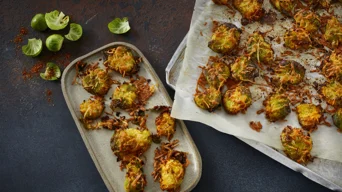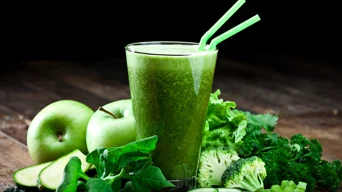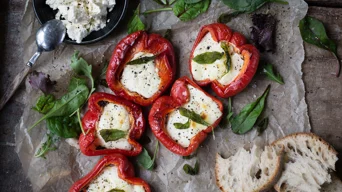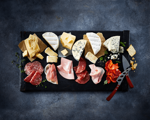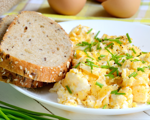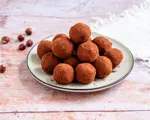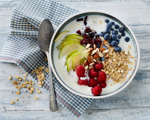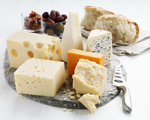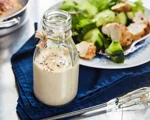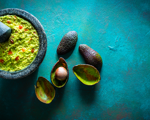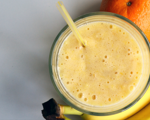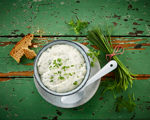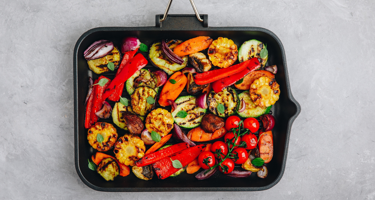
Most people know that vegetables can make part of a balanced diet. The same goes for proteins, which contribute to maintaining muscle mass and bones in our bodies. If you want to include some of the vegetables with the most protein in your diet, keep reading as we present our top 15 list of high-protein vegetables.
Are vegetables high in protein?
The protein content of vegetables varies greatly depending on which vegetables we look at. Some contain a lot, others almost nothing. In general, any food is considered a high-protein food if at least 20 % of its total energy value derives from protein. If it is at least 12 %, the food is considered a source of protein.
Which vegetables are high in protein?
Below, we have listed 15 vegetables and their protein content. We indicate the protein content in grams per 100 grams as well as the percentage of the total energy value – as mentioned earlier, the latter is relevant if we want to see if a product can be labelled “high in protein”, “protein source”, or none of the two.
We have only included vegetables in our list, which means that legumes, such as peas and lentils, are not present, although bean sprouts and lentil sprouts are included. You may also notice that there are no root vegetables. This is because they generally do not contain enough protein to be labelled high protein. For example, red beets contain 1.7 grams of protein, equalling about 13 % of the total energy value. Carrots and potatoes contain about 0.7 and 2 grams per 100 grams, respectively, which make up 7.8 and 10.4 % of the total energy value. As such, none of these root vegetables make the cut, but they can still be part of a balanced diet.
Bean sprouts
Protein content per 100g: 10
Percentage of the total energy value: 29.9 %
Lentil sprouts
Protein content per 100g: 9
Percentage of the total energy value: 29.3 %
Kale
Protein content per 100g: 4.7
Percentage of the total energy value: 31.7%
Brussel sprouts
Protein content per 100g: 4.5
Percentage of the total energy value: 34.3%
Corn on the cob
Protein content per 100g: 3.7
Percentage of the total energy value: 16.5%
Broccoli
Protein content per 100g: 3.6
Percentage of the total energy value: 41.1%
Rocket
Protein content per 100g: 3.3
Percentage of the total energy value: 63%
Artichokes
Protein content per 100g: 3.3
Percentage of the total energy value: 25.7%
Spinach
Protein content per 100g: 2.6
Percentage of the total energy value: 43.3%
Baby spinach
Protein content per 100g: 2.5
Percentage of the total energy value: 64.4%
White asparagus
Protein content per 100g: 2.4
Percentage of the total energy value: 37.4%
Romaine salad
Protein content per 100g: 1.6
Percentage of the total energy value: 46.1%
Pak choi
Protein content per 100g: 1.5
Percentage of the total energy value: 41.8%
Yellow pepper
Protein content per 100g: 0.9
Percentage of the total energy value: 15.9%
Red pepper
Protein content per 100g: 0.9
Percentage of the total energy value: 11.5%
If we look at the protein content in grams, bean sprouts and lentil sprouts are at the top of our list with a protein content of 10 and 9 grams per 100 grams, respectively. Then there is a jump down to kale, 4.7 grams per 100 grams, and Brussels sprouts, 4.5 grams per 100 grams, before the rest of the vegetables on the list follow gradually.
Based on the percentage of the total energy value made up of protein, baby spinach and rocket take the price of being highest in protein among the 15 vegetables in our list. However, it is important to consider the additional components of a food and not only use the percentage as a guideline. If, for example, a food contains a lot of water, the percentage of protein can easily be high because there are few other components contributing to the total energy value. This is why, for example, bean sprouts and kale have nearly the same percentage (29.9 % and 31.7 %, respectively), while the protein content in grams per 100 grams differs greatly: 10 grams in bean sprouts and 4.7 grams in kale.
Yellow and red pepper range as 14 and 15 on our list and actually do not count as high-protein vegetables, as they are below 20 %. However, we have chosen to include them anyway, as they are commonly used in many cuisines. We have included the two different colours to show that, although the amount of protein in grams per 100 grams is the same (0.9), there is a difference in the percentage of the total energy value (15.9 % in yellow pepper and 11.5 % in red pepper).
You might want to check our articles about protein in fruits and protein in meats and fish as well. Here, we also present tables to give an overview of different foods and their protein content.
Related Articles
Looking to boost your protein intake? Explore our comprehensive guides to protein-rich foods:




